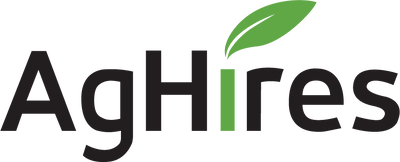
With today’s war for talent, attracting and retaining employees is just as important to your business as your capital expenditure budget for the upcoming year. Whether you’re looking to retain your current team or looking to attract new employees, the total compensation package you offer –and how you communicate to employees the value of “what they get”–makes a difference.
Let’s explore what employees are looking for in terms of benefits and work culture, what other small businesses are offering, and what low-cost perks some employees love.
WHAT EMPLOYEES VALUE MOST
Job seekers are taking a much deeper dive into exploring companies and job roles before they accept a position. When our team is recruiting candidates, job seekers ask questions about work culture, leadership team, hours involved, flexibility, training, advancement opportunities, and benefits along with questions on the intangible benefits. We are seeing a trend: Pay is important, but it’s not everything.When it comes to the total package, employees highly value benefits. According to a Glassdoor 2016 survey, 79% of employees would prefer new or additional benefits over a pay increase. According to the survey, benefits employees valued more than pay raises in order of importance are health insurance, paid time off, performance bonuses, sick days, 401K, flex schedule, and work perks (such as free lunch).
As we compete for talent, we are not only competing against other businesses in agriculture but other local companies outside the industry. In a National Small Business Association 2015 survey, 41% of firms with one to five employees offer health benefits. That number increases drastically to 73% for those with 10 to 20 employees. So even though health insurance premiums are skyrocketing, you may need to offer coverage to stay on par with non-farm jobs in your community.
LOW-COST, HIGH-VALUE BENEFITS
Given that, we know employees value benefits and some of the intangibles like work culture. Let’s explore low-cost options for making your farm the company of choice. We see all these benefits currently offered on farms.- Meals. Whether it’s a side of beef or free lunches, employees value having food provided. I know several farms that provide lunch daily, others deliver during peak seasons or on a scheduled basis like every Friday.
- Company Clothing. It’s a great way to bring the team together and promote your farm operation. Employees love the opportunity to wear a free company t-shirt or sweatshirt.
- Wellness Programs. Covering the cost for flu shots or a portion of gym memberships shows employees you care. In turn, that may reduce sick days for the company.
- Family Events. Whether it’s taking the team and their family to a ball game or holding an annual summer picnic, bring the team together and get to know their families with an outing.
- Allow Employees to Use Company Equipment. Make it known to employees that they can use the dump truck to haul a load of stone or they can use the shop to change the oil for their personal vehicles.
The following benefits aren’t common in farm operations but may build goodwill in the long run.
- Flex Time. Allow employees to take off for doctor’s visits, get a haircut, and do other personal errands without using vacation time. Maybe not applicable in the middle of harvest, but at appropriate times of the year, it’s a great work perk for the team.
- Vendor Discounts. Work with local businesses to negotiate a company discount for employees such as gyms, car dealerships, local restaurants, parts stores, etc.
- Paid Charity Time. Allow employees one to two days per year to focus on volunteering in the community.
COMMUNICATE THE TOTAL PACKAGE
In speaking with farms across the country, many are offering one or more benefits to employees. Often communicating the full value of those benefits to employees is missed. Let’s say you do offer a side of beef, lunches, or even housing. Employees may not fully understand the full value of having some of those benefits. If you provide $2,000 in free lunches and beef per year pre-tax, the employee would need to earn the equivalent of $3,000 in gross earnings to do the same on their own. They may overlook that they would have 30% or more in taxes if they were to pay for the same items themselves in after-tax earnings.I recommend that farm owners provide a Total Compensation Statement once a year that itemizes the total rewards an employee receives. Someone with a base salary of $50,000 might be surprised to learn that the 100% company-provided health insurance for family coverage is worth an additional $16,000, for example, or the use of the company truck $6,000 and gas another $3,200 per year.
Take time this winter to strategize and develop your value proposition for employees. Create a communication plan for ensuring that value is shared.
Lori Culler, Owner, AgHires (www.aghires.com)
Explore these low-cost, high-value ways to keep your employees happy and well!





